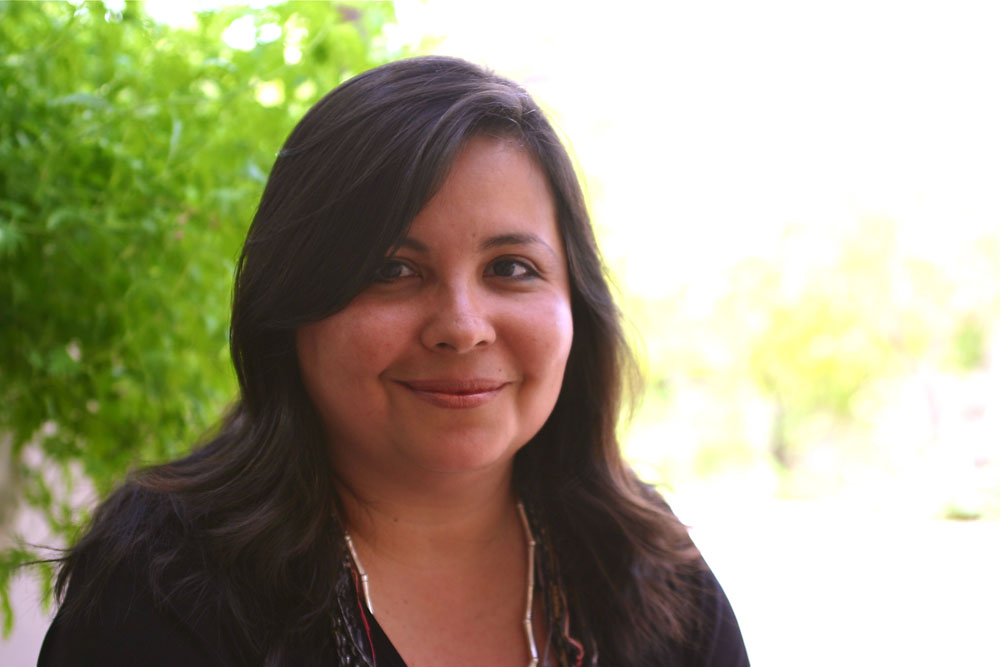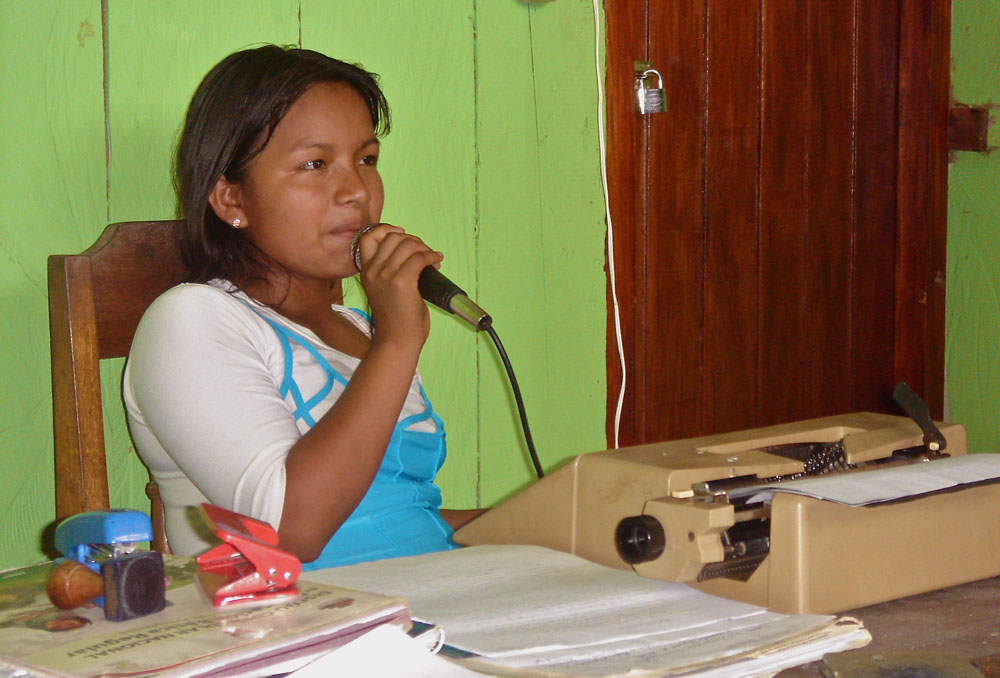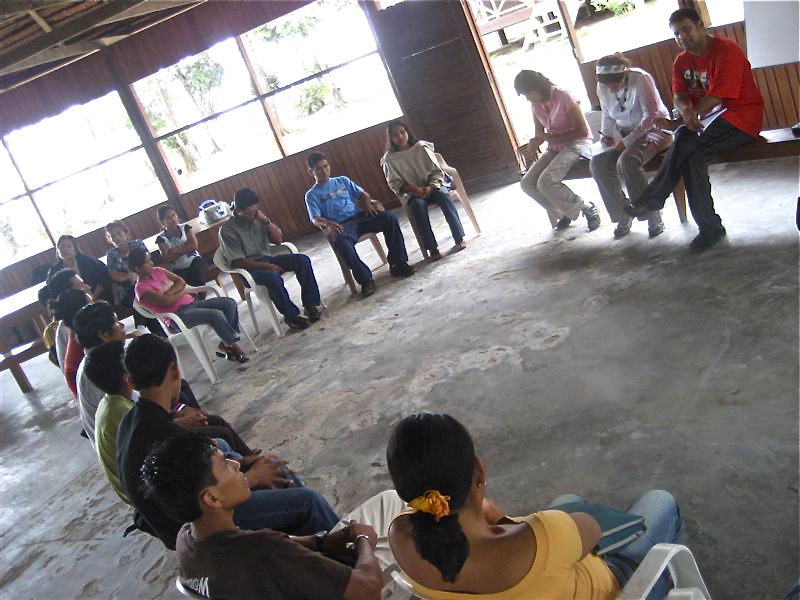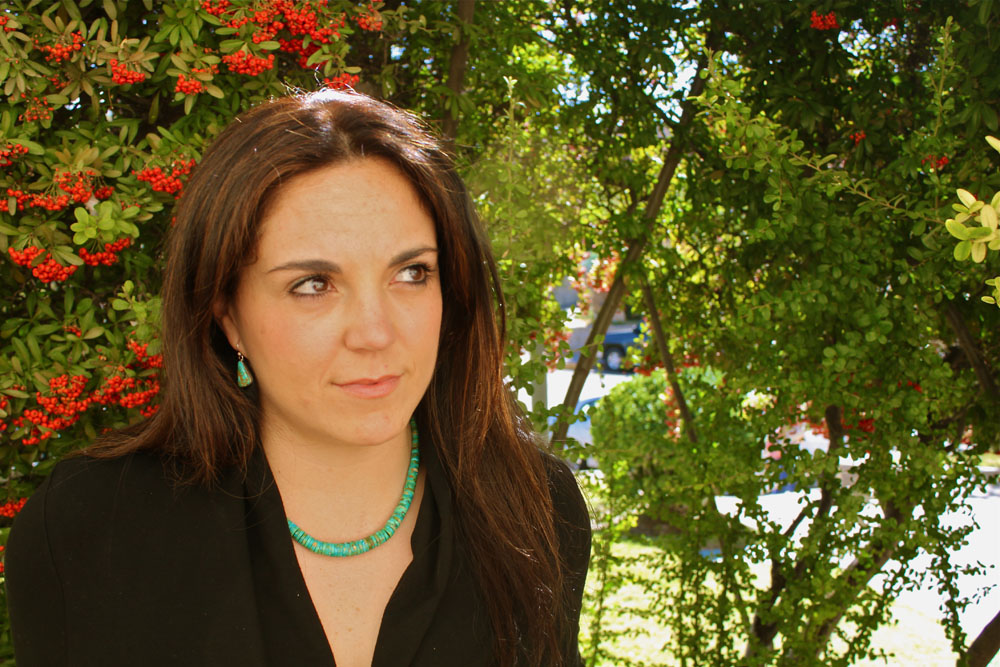They travel miles and days by canoe, winding down Amazon River waterways that are infested with malaria-carrying mosquitoes and exotic insects. Mostly women, they paddle through an environment that hides all types of predators, both human and animal, just to deliver a letter to the local mailman.

Pequepeques or boats, are the main mean of transportation on the Peruvian Amazon. (Courtesy of Lucia Dura)
The authors of these letters live along the huge snaking maze of the Peruvian Amazon, where indigenous communities play a vital role in the writing and producing of a radio show called, “Welcome Health.” The show, which is aired twice daily, broadcasting through out the vast jungles of Peru, is part of a series of community-based projects facilitated by Minga, a non-profit organization formed in 1998.
Their aim was to find ways to convey information to women and children about health, safe sex and prevention of diseases as well as tips on what to do through alternative methods of communication. Eliana Elias is founder and executive director of Minga.
“Since the beginning we wanted to organize a project they may build bridges. We did not see ourselves as an organization to send messages out to the community but instead to create a system in which people could send their messages to us and we could work based on them,” said Elias.
Elias, who grew up in Lima, the capital of Peru, first arrived in the jungles of the Amazon during the cholera epidemic of the early 1990’s. She discovered another epidemic —the cultural barrier between the Amazon people and modern society. Elias noticed that simple solutions to diseases and sanitation were lost in translation.
“That’s when I realized about interculturalism and the challenge it represents to really deliver messages that may reach people and be affective and sometimes be a difference of life and death,” said Elias

Eliana Elías, founder and executive director of Minga. (John De Frank/Borderzine.com)
Over 50% of Peru’s population live in the rural regions and make up a number of different cultures and languages. An estimated million people inhabit the Loreto region of Peru, deep in the Amazon, where Elias conducts most of her studies and work.
Isolation is one of the many problems the people of the Amazon face explains Elias, “In this region there are very few roads, so most of the transportation is the river and it could take days and days to reach one point to the other.”
Elias and her staff at Minga deal with many of the social and health issues of women living in the Amazon. Minga focuses on women, even though they are often overshadowed by men, because they are the foundation to the functions of a family and the development of children. One of Minga’s main interests is pregnancy and how it affects the women in these Amazon communities where many start giving birth as early as 14 years of age and continue to have children into their late 40’s.
“It’s really very hard but at the same time our purpose is to focus on the strength these people have…they are very resilient in many ways. They are great social communicators, they have a natural talent…and are excellent at telling stories.”
Through using the women’s skill in storytelling, Elias and Minga, try to come up with creative ways to communicate contemporary concepts and health information.
“The first thing is this — we are not trying to define the concepts, we are working on a social construction of messages,” said Elias. “We are not just trying to translate one message into different languages, it’s more beyond that, it’s even trying to understand the local concepts of health and sickness, which might be a different from our western concepts.”
To help clarify this, Elias tells a story of her earlier years working with the women and when she attempted to teach a community about the importance of boiling water to kill germs and hand sanitation through educational posters.
When she gave them these materials that read the solution against cholera is in your hands, the women would look at their hand, investigating and say, “But we do not see anything in hour hands.” The idea of germs, microscopic organisms that live on the surface of skin were suspicious because it was not visible to them.
“They, (the posters), would say things like, boil water for 20 minutes, but the women, would tell me, ‘we don’t have watches here so how can we see 20 minutes?” recalls Elias.
Elias then asked the women how they would interpret the importance of boiling water to kill germs? She said some of the women came up with drawings that depicted a caldron like that of Halloween folklore, with bubbles rising out of the pot and amongst the bubbles, evil sprits or ghosts.
“They explained to me that when you boil water, those bubbles take out the ghosts…the water becomes healthy, healed from badness and sickness.”

A community member uses a loudspeaker to spread news to her village. (Courtesy of Lucia Dura)
This method of communicating a message into a drawing with spiritual elements spoke more to the people. It made sense to them why to boil water in order to drink healthy water, or to them, healed water.
“This particular moment I will always remember because it opened a whole new world of recognizing how important it is to let the people deliver their own messages,” said Elias.
Elias found that by listening to the communities and becoming the student rather than teacher and understanding their ways, she could better address the problems they faced.
Although the radio program has been running for over 12 years, it wasn’t initially a participant production. After the first couple of programs, women started writing in and it was then that Minga saw that the program would better aid the community and the women if they were directly involved.
Minga began carefully analyzing and categorizing each letter to see how they can incorporate the issues that really were affecting the people into their scripts.
Through these personal letters of struggles with domestic abuse, gender roles, health problems, Minga has been able to look through the eyes of the indigenous and the way they interpret the forest.
Although the radio show has been very successful, Minga saw that the empowerment the women gained by sharing stories prove to be a powerful tool for prevention and reconciliation. The organization figured that the women needed a more hands-on, focus group element besides the radio.
“So we visit them (the women), and invite them to become part of a group of community promoters,” explains Elias. “These promoters attend a 5-day training workshop that work on self-esteem, cultural identity, and health issues,” said Elias

Lucia Dura and Arvind Singhal (far right) conducting a focus group in an Amazonian village. (Courtesy of Lucia Dura)
“Minga has a certain way of practicing intercultureality, that is admirable. They have figured out how to illicit these ways of talking, of communicating that are native, that are accepted by the community, listening and by getting the input of the local people how to proceed,” explains Lucia Dura, a Ph.D. candidate in the Department of English at the University of Texas at El Paso. Dura is working with Minga in building a framework that encompasses the models Minga and the women of the communities have developed in order to self sustainable.
As Dura expresses, working with Minga is not a one-way street, but rather a two-way highway of information that she feels is important to study their ways of interculturality for use back in the states. “Its more of a process that I learned about, than us providing anything that they could use in terms of tools for translating information,” said Dura. For Dura, this framework of models could be shared and used in communities through out the world.
Minga has a host of projects and programs outside the communication and radio model. They run an income-generating program that helps women produce trades and skills to generate income by way of fisheries, agroforestry and chicken poultry models. But, as Elias describes, “income” is defined different for the woman of the Amazon.
“One of the many challenges is to keep an open mind about the categories for measuring success and failure,” said Elias.
In case the chicken poultry models, in which the women would raise chickens and sell them or their eggs in the market for income, Minga was concerned that the cost of raising and vaccinating the chickens might not be feasible in relation to the income it was generating.
“When ever they were pregnant or sick or it rains very badly, going into the forest to take care of the agroforestry crop or any other activity they do in the rainforest is really, really hard for them…especially if they have an emergency involving their children,” said Elias.
The women’s response to this was taking a couple of chickens, wrap up their feet and put them in their canoe and ride with their children to the nearest health center or city market.
Although, Minga might not have seen this as a profitable model in currency the community women thought otherwise. “For them the chicken model was saving lives, it was immediate money in terms of emergencies so it was another one of the many lessons we learned from them,” Said Elias.

UTEP Ph.D. student, Lucia Dura. (John De Frank/Borderzine)
As Dura explains, the chicken model is an example of Minga’s Capacity Building component, which runs parallel to the Income-Generating component and is communicated through the Communication & Empowerment component. “We look at how they can raise their chickens in a healthy way, that minimizes diseases so that they can later eat them themselves. So before what might have been seen as a failed income generating activity is more of a livelihood activity.”
For Dura and Elias their work in Minga is working with old ways and news ways. “They have certain traditional ways of doing things. A way of life that they have been practicing for hundreds of years that work very well and then there are the more contemporary ways that we bring in,” said Dura.
Dura wondered why at first the Amazonian women were in need fuse both new and old concepts and she realized that when the women leave the indigenous regions to go into the cities and return, they bring the modern influences back. “They bring back disease, the bring back Coca Cola bottles, for example, so now they have plastic garbage to deal with,” said Dura. “So they have issues of how they going to dispose of things they bring in from the outside. How disease gets communicated and all of a sudden becomes more prevalent in places where disease was not present before.”
For Dura, it was that transaction of the new, contemporary way of life with that of rural, indigenous old ways concerning issues that the women were bringing in from the cities to the rural communities. “It was impactful to see the process of bringing in and communicating whether it was disease, plastics or health and healing…Its just a very palpable interactions, we take for granted sometimes, it happens very quickly,” said Dura.
“Minga is a Quechua word, which means communal work,” said Elias. In a challenging environment such as the jungles of the Amazon, explain Elias the name Minga represents just that, the community collective that her and her collogues have established with the indigenous.
“In our case it was the best way to start. It’s a way to work with people in a respectful way. Seeing them not only as the needy people but people who have many resources to put on the table…and this is the way we approach our work. That’s why it’s our work.”
